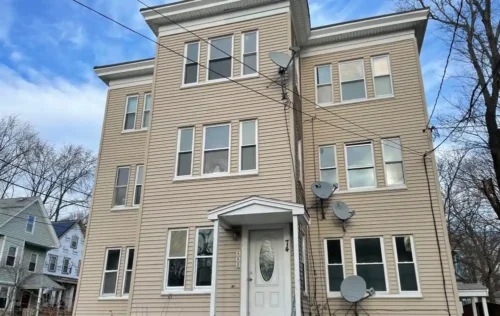Sober Living Insurance Coverage and Payment Options

Organizations may use other terms in lieu of halfway houses to avoid stigmatizing residents. Residents may be expected to share the costs of water, electricity, trash, internet, and transportation services (if offered) on top of rent each month. Lastly, halfway houses are often owned or sponsored by the state, while most sober-living houses are owned privately or by treatment facilities that want to provide continuing support for their patients. If a person comes from a correctional facility, they can be court-mandated to live in a halfway house for a predetermined amount of time. Because of this, halfway houses can be used by the homeless or people coming out of incarceration. California, however, is leading the way in regulating these facilities, so they do not discriminate, are not discriminated against, and maintain good health and safety standards for residents.
Community Support
The idea was to remove clients from destructive living environments that encouraged substance use and create new social support systems in treatment. Some programs created halfway houses where clients could reside after they completed residential treatment or while they attended outpatient treatment. While the rent for halfway houses vary, there is usually some sort of cost to live in them. This is because a certain amount of rent must be charged to properly run the facility. The rent may or may not include the cost of utilities — this varies depending on the home and who is running it.
Halfway House Rules

You may also reach out to the sober living home to see what types of assistance they offer. Some facilities require a minimum number of days of sobriety from substance abuse, but many will work with you to determine if you’re a good fit. Although halfway houses share a lot in common with sober-living homes, there are a few key differences that set them apart. Halfway houses serve as the halfway point between an institution and independent society, with residents usually coming from either correctional or inpatient treatment facilities. The amount of time you’ll stay at a halfway house varies, but most stays are between three to twelve months.
History of Halfway Houses
The rules at a halfway house are usually basic and enforced only to ensure you maximize your time there. Some rules are implemented to protect the other residents and make living together pleasant for everyone. Many halfway house requirements include a drug screening test before admission as they are not equipped to deal with withdrawal symptoms, so residents must complete medical detox before entering.
Clean and Sober Transitional Living (CSTL)
Join our newsletter to be part of a community of people with what is a halfway house shared experiences. Our quarterly newsletter reminds you that others have gone down this path and can provide valuable support. No matter where on your journey – considering sobriety, living sober for years or months already – our newsletter is here as a guide with helpful resources, events, and more.
Addiction and Mental Health Resources
- Instead, they serve as a safe, drug-free environment where recovering addicts can continue to work on their early sobriety.
- Sober living homes prioritize a safe and supportive environment, emphasizing accountability, community, and the development of life and coping skills necessary for long-term recovery.
- By 18 months nearly all had left, yet improvements were for the most part maintained.
This pattern of inadequate staffing extends to CEC halfway houses in California, where a former facility director cited inadequate training and earnings barely above minimum wage. The clinical director of the California facility, responsible for resident health, did not possess a medical degree, or even a college degree. Some facilities, like community-based correctional facilities, can serve dual functions that blur the lines of what facilities are and are not halfway houses. For instance, a community-based corrections facility might primarily house people who have been ordered to serve their full sentences at the facility, but also house some individuals who are preparing for release. In our appendix table, we attempt to break down which of those 527 facilities fall under our “halfway houses in the criminal justice system” definition, and which facilities primarily serve other purposes. If you or a loved one is struggling with alcohol or substance misuse, American Addiction Centers can help you find treatment and understand post-treatment options such as halfway houses.
Difference Between Halfway Houses and Sober Living Homes

This is mostly due to the fact that halfway houses require you to remain sober while you live there. Therefore, people who already have some level of sobriety under their belt are more likely to succeed at a halfway house than those who are new to recovery. Some halfway houses require residents to pass a drug screening and/or breathalyzer test, as they’re not equipped to deal withwithdrawal symptoms ordelirium tremens. Halfway houses are ideal for people who’ve already gone throughmedical detoxand have completed aninpatient or outpatient treatment program. In addition to reducing the risk of relapse, recovery residences have other benefits.
- Every sober living home is different—in terms of structure and rules—so it’s important to do your research and ask questions before committing to pay rent.
- Furthermore, the Economic Development Administration offers grant resources and maintains a directory to help non-profits find funding opportunities at the state or city level.
- After some period of time, usually several months, residents are required to move out whether or not they feel ready for independent living.
- Because of this, halfway houses can be used by the homeless or people coming out of incarceration.
- Second, individuals self selected themselves into the houses and a priori characteristics of these individuals may have at least in part accounted for the longitudinal improvements.
- Inpatient treatment centers are residential facilities and allow recovering addicts to live at the center for days.
How Can I Pay for a Sober Living Home?
Usually, residents have recently completed inpatient or intensive outpatient treatment for substance use addiction. Sometimes, sober living houses also act as a stand-alone approach for substance misuse problems, meaning that someone will go straight there without first attending a residential treatment center. Many sober living homes are not government-funded and are self-supporting or operated by charities or addiction treatment centers.
Every year, tens of thousands spend time in halfway houses
Some halfway houses also require residents to work or seek gainful employment during their stay. What’s more, halfway houses have a financial incentive to maintain full occupancy due to the conditions of contracts. Since states have overwhelmingly failed to protect incarcerated people in jails and prisons, the outlook for halfway houses is bleak. In May, an investigation by The Intercept revealed that the federal government is underreporting cases of COVID-19 in halfway houses.

ORS is an outpatient substance abuse treatment program located in Berkeley, California that treats approximately 800 clients per year. Most of the clients are low income and many have history of being homeless at some point in their lives. Because a large number do not have a stable living environment that supports abstinence from alcohol and drugs, ORS developed SLHs where clients can live while they attend the outpatient program. The houses are different from freestanding SLHs, such as those at CSTL, because all residents must be involved in the outpatient program. Most residents enter the houses after residing in a short term homeless shelter located near the program. At admission, nearly all residents are eligible for some type of government assistance (e.g., general assistance or social security disability) and use those funds to pay SLH fees.
